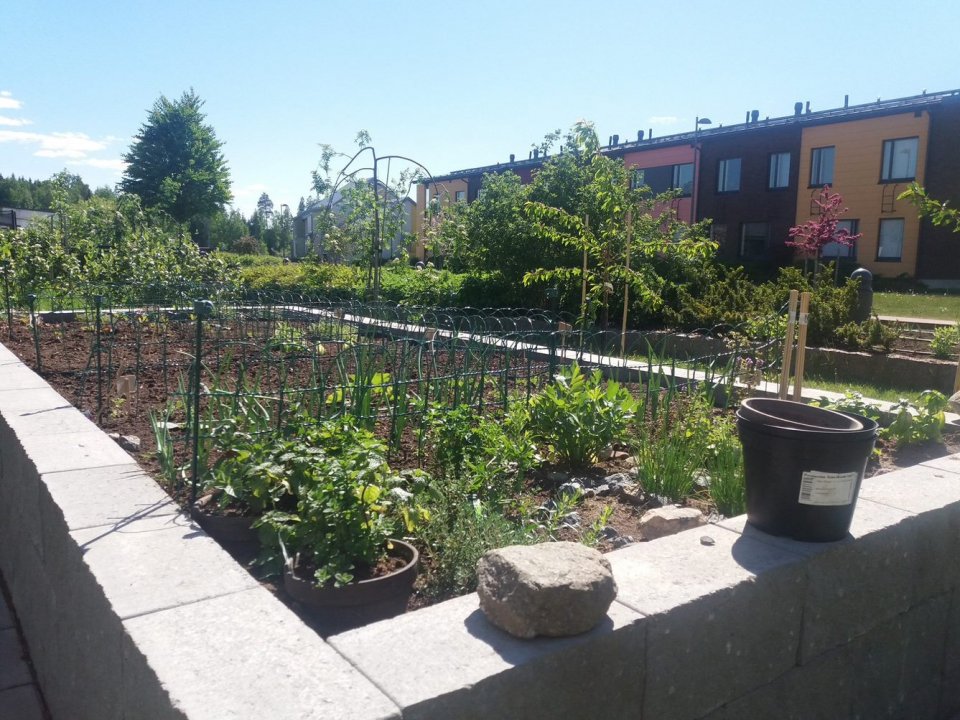
Two community gardens have been implemented by local housing cooperatives in the Vuores area. The City of Tampere financed these small-scale nature-based solutions through innovation vouchers - the first community garden received an innovation voucher worth €6500 and the second one received an innovation voucher worth €1000. The innovation vouchers were used to purchase the materials and transportation services needed for the construction work, as the gardens were planned and built by the residents themselves.
Three small-scale NbS projects were awarded innovation vouchers in summer 2019 by the City of Tampere. Two of the vouchers were used to develop garden areas near residential housing. Through this initiative, the city encouraged citizens to take the initiative to plan and implement the NbS that they find useful for their environment.
The first community garden funded by the innovation vouchers implemented trees and bushes, planter boxes for the residents to use, fruit trees and berry bushes, perennials and summer flowers, as well as areas to compost gardening waste and structures to harvest rain water for garden irrigation. The second community garden implemented fruit trees, berry bushes and urban gardening boxes.
Urban gardens are a common way to establish garden space for residents. Innovation vouchers encourage residents and other city actors than the municipality to plan and implement novel nature-based solutions in the city. The implemented nature-based solutions were simple DIY-type solutions feasible for residents to create rather than engineered solutions. The involved housing cooperatives were very pleased with the end results and agreed that these collective projects have further enhanced the relations between the residents.
- Changing image of the urban environment
- Increase accessibility to green open spaces
- Increase awareness of NBS solution & their effectiveness and co benefits
- Increase communities’ sense of ownership
- Increase social interaction
- Increase well-being
- Increase willingness to invest in NBS
- Provision of health benefits
- Social inclusion
- Social learning about location & importance of NBS
The living lab is located in a new area and, therefore, the city did not receive many applications for the innovation vouchers. In similar future initiatives it is recommended to target such funding towards older and more dense areas with less nature and resources. The inclusion of innovation vouchers in Tampere’s NbS business model proved to be a successful approach to engage citizens to a greater extent in the city’s NbS efforts. This solution can easily be replicated in other cities or contexts when small- or medium-scale nature-based solutions are implemented.
Innovation vouchers encourage residents and other city actors than municipality ideate and implement novel nature-based solutions in the city. Vuores living lab was a new area and there were few applications received. In the future, targeting such funding to older/more dense areas with less nature and resources is recommended.
- Urban garden
